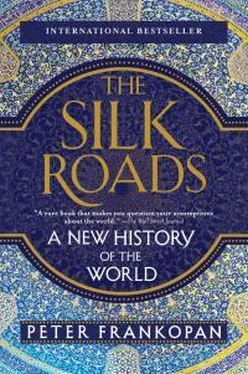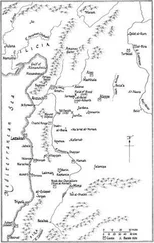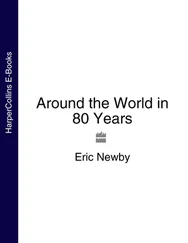67. Kux, The United States and Pakistan, pp. 221–4.
68. Memcon, 12 May 1976, cited by R. Alvandi, Nixon, Kissinger, and the Shah: The United States and Iran in the Cold War (Oxford, 2014), p. 163.
69. G. Sick, All Fall Down: America’s Tragic Encounter with Iran (New York, 1987), p. 22.
70. “Toasts of the President and the Shah at a State Dinner,” 31 December 1977, PPPUS: Jimmy Carter, 1977 , pp. 2220–2.
71. Mossaver-Rahmani, “Iran’s Nuclear Power,” 192.
72. Pesaran, “System of Dependent Capitalism in Pre- and Post-Revolutionary Iran,” International Journal of Middle East Studies 14 (1982), 507; P. Clawson, “Iran’s Economy between Crisis and Collapse,” Middle East Research and Information Project Reports 98 (1981), 11–15; K. Pollack, Persian Puzzle: The Conflict between Iran and America (New York, 2004), p. 113; also here N. Keddie, Modern Iran: Roots and Results of Revolution (New Haven, 2003), pp. 158–62.
73. M. Heikal, Iran: The Untold Story (New York, 1982), pp. 145–6.
74. Shawcross, Shah’s Last Ride , p. 35.
75. J. Carter, Keeping Faith: Memoirs of a President (Fayetteville, AR, 1995), p. 118.
76. A. Moens, “President Carter’s Advisers and the Fall of the Shah,” Political Science Quarterly 106.2 (1980), 211–37.
77. D. Murray, US Foreign Policy and Iran: American–Iranian Relations since the Islamic Revolution (London, 2010), p. 20.
78. U.S. Department of Commerce, Foreign Broadcast Service , 6 November 1979.
79. “Afghanistan in 1977: An External Assessment,” U.S. Embassy Kabul to State Department, 30 January 1978.
80. Braithwaite, Afgantsy , pp. 78–9; S. Coll, Ghost Wars: The Secret History of the CIA, Afghanistan, and Bin Laden, from the Soviet Intervention to September 10, 2001 (New York, 2004), p. 48.
CHAPTER 24—THE ROAD TO CATASTROPHE
1. Andrew and Mitrokhin, Mitrokhin Archive II , pp. 178–80.
2. Sreedhar and Cavanagh, “US Interests in Iran,” 140.
3. C. Andrew and O. Gordievsky, KGB: The Inside Story of its Foreign Operations from Lenin to Gorbachev (London, 1990), p. 459.
4. W. Sullivan, Mission to Iran: The Last Ambassador (New York, 1981), pp. 201–3, 233; also Sick, All Fall Down , pp. 81–7; A. Moens, “President Carter’s Advisors,” Political Science Quarterly 106.2 (1991), 244.
5. Z. Brzezinski, Power and Principle: Memoirs of the National Security Adviser, 1977–1981 (London, 1983), p. 38.
6. “Exiled Ayatollah Khomeini returns to Iran,” BBC News, 1 February 1979.
7. Sick, All Fall Down , pp. 154–6; D. Farber, Taken Hostage: The Iran Hostage Crisis and America’s First Encounter with Radical Islam (Princeton, 2005), pp. 99–100, 111–13.
8. C. Vance, Hard Choices: Critical Years in America’s Foreign Policy (New York, 1983), p. 343; B. Glad, An Outsider in the White House: Jimmy Carter, his Advisors, and the Making of American Foreign Policy (Ithaca, NY, 1979), p. 173.
9. Constitution of the Islamic Republic of Iran (Berkeley, 1980).
10. “Presidential Approval Ratings—Historical Statistics and Trends,” www.gallup.com.
11. A. Cordesman, The Iran–Iraq War and Western Security, 1984–1987 (London, 1987), p. 26. Also D. Kinsella, “Conflict in Context: Arms Transfers and Third World Rivalries during the Cold War,” American Journal of Political Science 38.3 (1994), 573.
12. Sreedhar and Cavanagh, “US Interests in Iran,” 143.
13. “Comment by Sir A. D. Parsons, Her Majesty’s Ambassador, Teheran, 1974–1979,” in N. Browne, Report on British Policy on Iran, 1974–1978 (London, 1980), Annexe B.
14. R. Cottam, “US and Soviet Responses to Islamic Political Militancy,” in N. Keddie and M. Gasiorowski (eds), Neither East nor West: Iran, the Soviet Union and the United States (New Haven, 1990), 279; A. Rubinstein, “The Soviet Union and Iran under Khomeini,” International Affairs 57.4 (1981), 599.
15. Turner’s testimony was leaked to the press, “Turner Sees a Gap in Verifying Treaty: Says Iran Bases Can’t Be Replaced until ’84,” New York Times , 17 April 1979.
16. R. Gates, From the Shadows: The Ultimate Insider’s Story of Five Presidents and How They Won the Cold War (New York, 1996). Gates says little other than that negotiations were delicate; and that Admiral Turner grew a moustache for the visit, presumably as a disguise, pp. 122–3.
17. J. Richelson, “The Wizards of Langley: The CIA’s Directorate of Science and Technology,” in R. Jeffreys-Jones and C. Andrew (eds), Eternal Vigilance? 50 Years of the CIA (London, 1997), pp. 94–5.
18. Rubinstein, “The Soviet Union and Iran under Khomeini,” 599, 601.
19. Gates, From the Shadows , p. 132.
20. R. Braithwaite, Afgantsy: The Russians in Afghanistan, 1979–89 (London, 2011), pp. 37–44.
21. “Main Outlines of the Revolutionary Tasks”; Braithwaite, Afgantsy , pp. 42–3; P. Dimitrakis, The Secret War in Afghanistan: The Soviet Union, China and Anglo-American Intelligence in the Afghan War (London, 2013), 1–20.
22. J. Amstutz, Afghanistan: The First Five Years of Soviet Occupation (Washington, DC, 1986), p. 130; H. Bradsher, Afghanistan and the Soviet Union (Durham, NC, 1985), p. 1010.
23. N. Newell and R. Newell, The Struggle for Afghanistan (Ithaca, NY, 1981), p. 86.
24. N. Misdaq, Afghanistan: Political Frailty and External Interference (2006), p. 108.
25. A. Assifi, “The Russian Rope: Soviet Economic Motives and the Subversion of Afghanistan,” World Affairs 145.3 (1982–3), 257.
26. V. Bukovsky, Reckoning with Moscow: A Dissident in the Kremlin’s Archives (London, 1998), pp. 380–2.
27. Gates, From the Shadows , pp. 131–2.
28. U.S. Department of State, Office of Security, The Kidnapping and Death of Ambassador Adolph Dubs, February 14 1979 (Washington, DC, 1979).
29. D. Cordovez and S. Harrison, Out of Afghanistan: The Inside Story of the Soviet Withdrawal (Oxford, 1995), p. 35; D. Camp, Boots on the Ground: The Fight to Liberate Afghanistan from Al-Qaeda and the Taliban (Minneapolis, 2012), pp. 8–9.
30. CIA Briefing Papers, 20 August; 24 August; 11 September; 14 September, 20 September; Gates, From the Shadows , pp. 132–3.
31. “What Are the Soviets Doing in Afghanistan?,” 17 September 1979, National Security Archive.
32. D. MacEachin, Predicting the Soviet Invasion of Afghanistan: The Intelligence Community’s Record (Washington, DC, 2002); O. Sarin and L. Dvoretsky, The Afghan Syndrome: The Soviet Union’s Vietnam (Novato, CA, 1993), pp. 79–84.
33. M. Brecher and J. Wilkenfeld, A Study of Crisis (Ann Arbor, MI, 1997), p. 357.
34. Pravda , 29, 30 December 1979.
35. Amstutz, Afghanistan , pp. 43–4. These rumours were so strong—and presumably so persuasive—that Ambassador Dubs himself had made enquiries with the CIA to check if they were true, Braithwaite, Afgantsy , pp. 78–9. For gossip spread locally, R. Garthoff, Détente and Confrontation: Soviet–American Relations from Nixon to Reagan (Washington, DC, 1985), p. 904. Also here Andrew and Mitrokhin, Mitrokhin Archive II , pp. 393–4.
36. A. Lyakhovskii, Tragediya i doblest’ Afgana (Moscow, 1995), p. 102.
37. Braithwaite, Afgantsy , pp. 78–9, 71; Lyakhovskii, Tragediya i doblest’ Afgana , p. 181.
Читать дальше











